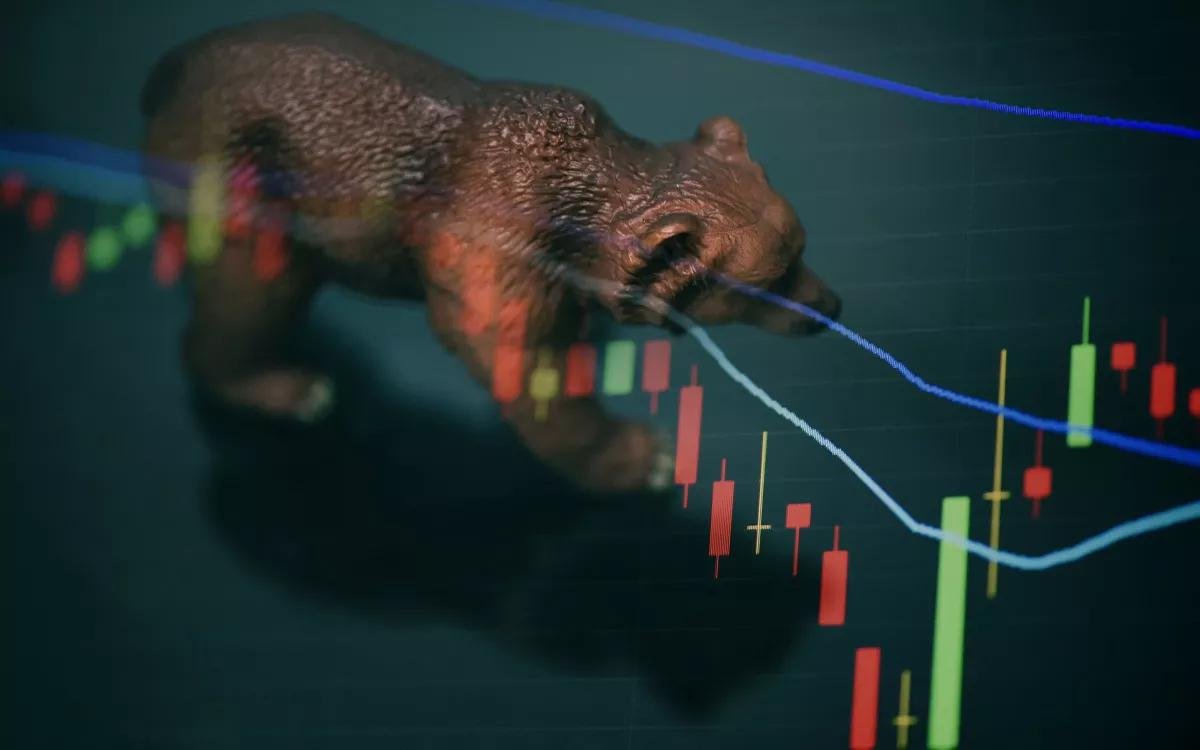Bitcoin has triggered a death cross within the Ichimoku Cloud, signalling potential bearish momentum. Given that it recently created a death cross within the Ichimoku Cloud indicator, the most recent movement of Bitcoin on the daily candles is crucial. When a stock or security’s short-term moving averages cross below even its longer-term moving averages, a bearish signal is generated by this technical occurrence.
However, it’s worth noting that it began to resemble a fractal around the end of January 2023, and analysts are still anticipating a stock rebound. The current setup mirrors a late-2023 fractal, with the Kumo Cloud as a key support level. Analysts see two potential outcomes: a rebound to invalidate the death cross or further downside if support breaks.
Liquidity Grab and Kumo Cloud Support
In the current chart structure, the correction phase that defined the last weeks of 2023 appears to be replicated. Before Bitcoin made a much stronger comeback, there were widespread liquidity runs and the cryptocurrency was trading below important support levels at that time. Looking back, we can see that one of the components of the Ichimoku approach, the Kumo Cloud, was a starting point for the upward trend and a level of support during the correction.
Bitcoin’s Death Cross Volatility
Bitcoin has shown distinctive traits that differ from other financial instruments’ typical behavior. The market for cryptocurrencies is notoriously speculative and prone to significant volatility. In conventional markets, a death cross might be a powerful bearish indication, but the price fluctuations of Bitcoin sometimes defy convention. Bitcoin has occasionally experienced periods of consolidation or even a price rebound following the formation of a death cross.
Bitcoin’s Death Cross Impact
The way a death cross is interpreted can also be influenced by the state of the Bitcoin market in recent months or years. For example, if the price of Bitcoin has been rising for a long time, the death cross may just signal a temporary correction rather than the start of a long-term decline. Instead of seeing the death cross as a sell signal in this situation, the market may see it as a chance for accumulation.
Additionally, the overall macroeconomic environment plays a role. In periods of high inflation, geopolitical uncertainty, or market turbulence, Bitcoin is often seen as a hedge against traditional financial systems. In such contexts, a death cross might be perceived as less important. Bitcoin could be driven more by external factors like institutional adoption or regulatory news than by its short-term technical indicators.
Institutional Impact on BTC
Bitcoin’s reaction to technical indications such as death crosses is also distinct due to the increasing institutional interest in cryptocurrency. Institutions typically have a longer investing horizon and emphasize market trends and fundamental considerations more than cyclical price swings. Given that these investors might be more interested in Bitcoin’s long-term growth potential than in short-term price fluctuations. This could indicate that a death cross has less relevance.

In contrast to the more retail-driven, erratic price swings of previous eras, institutional investment has played a bigger role in recent years, contributing to the stability of Bitcoin’s price movements. Bitcoin may be protected from the conventional bearish pressure that is usually connected to death crosses by this institutional support.
Sentiment & Media Impact on BTC
Bitcoin’s price behavior is heavily influenced by sentiment, and technical patterns can be amplified by media coverage. A death cross could cause short-term sell-offs by generating some unfavourable headlines and inciting panic among individual investors. However, the mood can pass quickly, particularly in a market as volatile as the Bitcoin market.
Positive developments, such as more transparency. Regulations or widespread corporate or governmental adoption might swiftly offset. The death cross’s negative effects and cause the market to turn its attention from short-term technical indications to long-term possibilities.
Bitcoin’s Market Evolution
Bitcoin’s price movements may resemble those of conventional financial markets. As it develops as an asset class, it would lessen the occurrence of erratic price swings. Increase the significance of technical indicators like the death cross. However, because of its comparatively low liquidity compared to more conventional assets. Bitcoin will likely maintain some of its more volatile pricing behavior as it develops. Because the market may be more responsive to wider economic events, including monetary policy shifts. Rather than strictly technical factors, death crosses in Bitcoin may not always indicate long-term bearish trends.
Summary
In short, Bitcoin’s latest death cross may not be a typical bearish signal. Factors such as institutional involvement, strong on-chain data, and shifting market sentiment can be mitigated. Its usual negative implications often lead to price stability or even a rebound rather than a prolonged downtrend. However, it’s worth noting that it began to resemble a fractal around. The end of January 2023, and analysts are still anticipating a stock rebound.
[sp_easyaccordion id=”5937″]

